SINGLE GEM:
A single GEM detector consists in a conversion and drift region, a GEM foil, an induction region and a printed circuit board (PCB) for electron collection. Typical thickness values for fast beam detectors are 3 mm and 1 mm for the drift and induction gaps respectively. An essential feature of the device (not found in any other gas detector) is that the charge multiplication electrode, receiving the high voltage (the GEM) is electrically separated from the readout board. This last can be patterned at will with strips or pads (see also GEM READOUT):
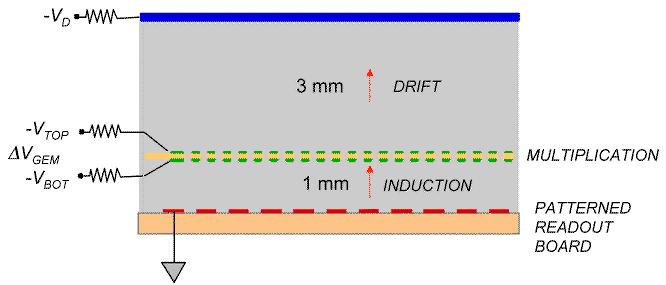
Proportional avalanche amplification has been observed in a wide range of gases and pressures. The effective gain of the structure, defined as ratio of collected to primary charge (a fraction of the charge is collected by the GEM electrodes), can reach ten thousand in most gases, although a gain below one thousand is recommended for safer operation:
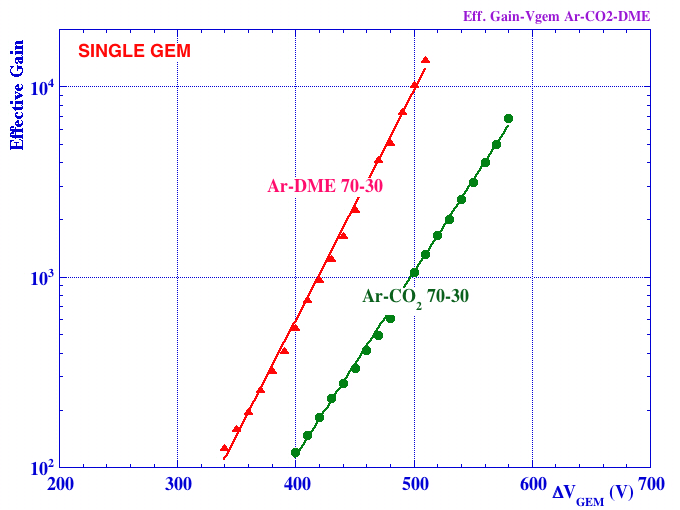 |
Effective gain dependence on GEM voltage for two gas mixtures. |
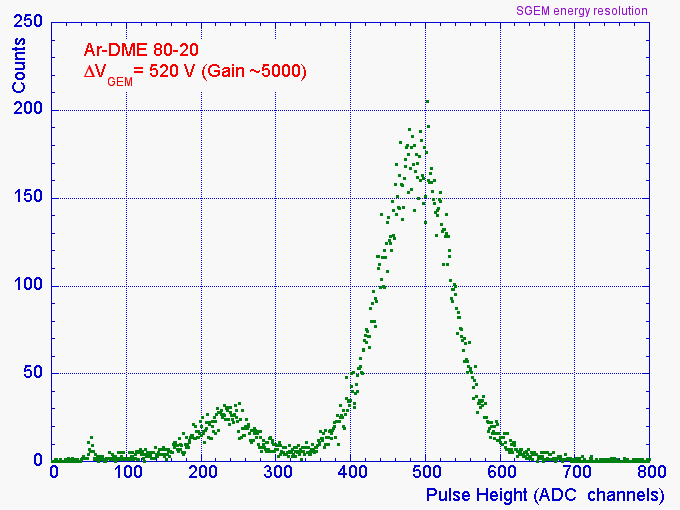 |
Energy resolution of a GEM multiplier: FWHM ~18% at 5.9 keV (gain ~1000): |
MULTI-GEM OPERATION: DOUBLE GEM
Although high gains can be reached with a single foil, safer operation or higher gains can be obtained cascading two or more GEMs. A double-GEM (DGEM) detector has a drift, a transfer and a signal induction region:

The total effective gain of the DGEM is roughly the product of the gains of the two GEMs:
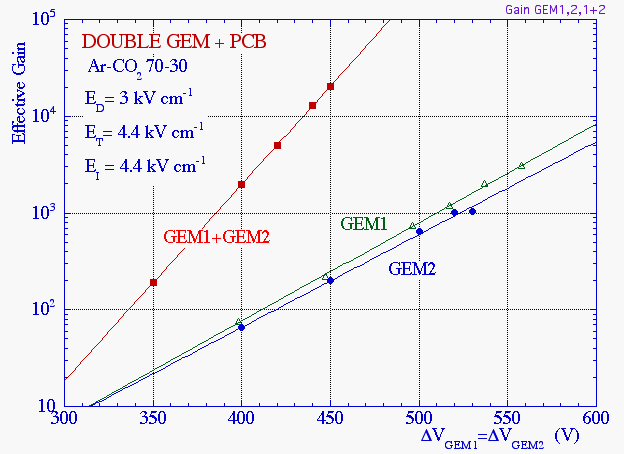
The gain is not affected by rate, up to very high fluxes.
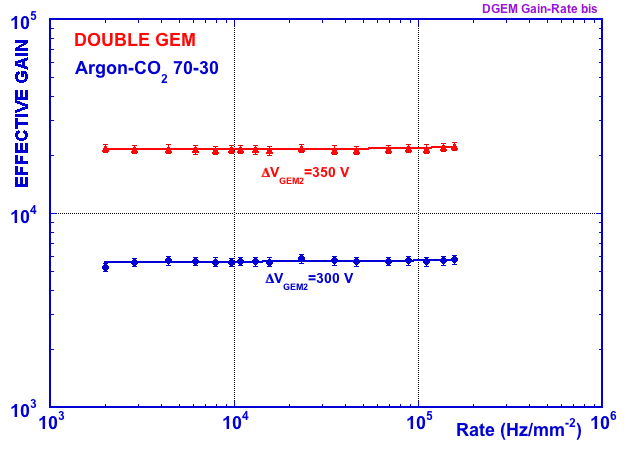 |
Measured gain at increasing X-ray fluxes |
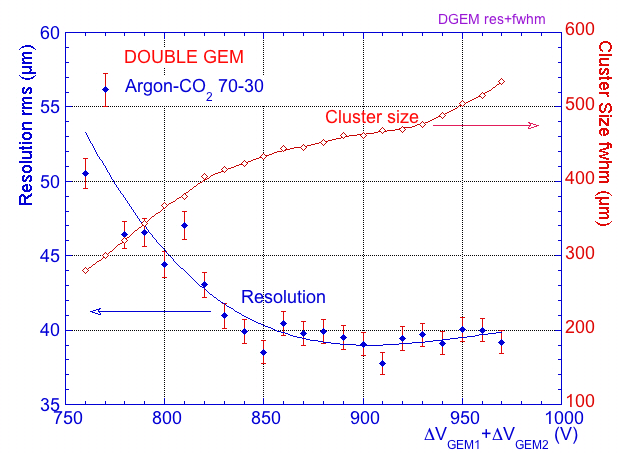 |
Cluster size (FWHM) measured on the anode strips, and space resolution for fast particles as a function of operating voltage. |
TRIPLE GEM
A cascade of three GEMs permit to reach even higher gains, particularly in presence of heavily ionizing background. For more details see DISCHARGES.
Multiple GEM devices allow to obtain very high gains in pure noble gases; see APPLICATIONS.
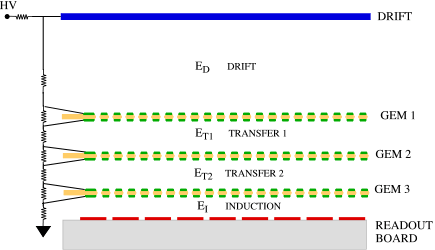
The drawing shows the simplest way to power multiple GEM detectors, with a resistive chain. For more details, see POWERING GEMs.
The discharge probability at a given gain depends on the presence of heavily ionizing background, experiment-dependent. In the laboratory, the process is emulated introducing an alpha-particle generator (220Rn) in the gas flow.
With a Triple GEM, a gain well above 104 can be sustained even in presence of heavily ionizing background.
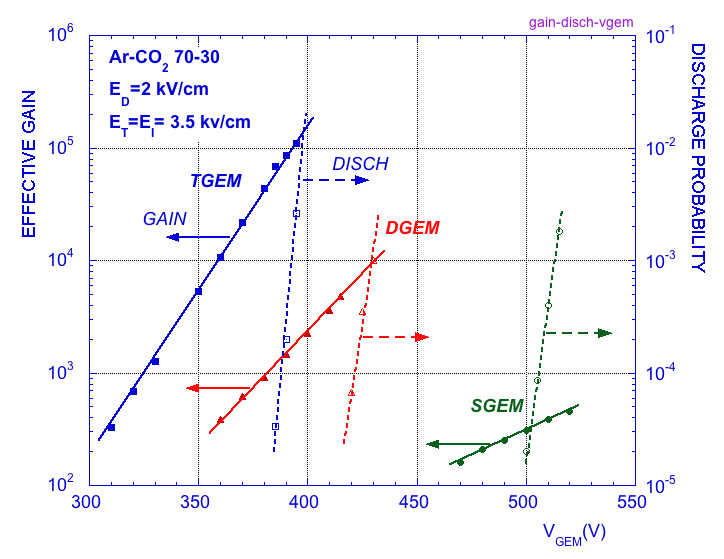 |
Gain an discharge probability on irradiation with alpha particles for the single, double and triple GEM |
A system of 20 Triple-GEM detectors is operational in the COMPASS experiment at CERN; construction and performances are described in COMPASS.
